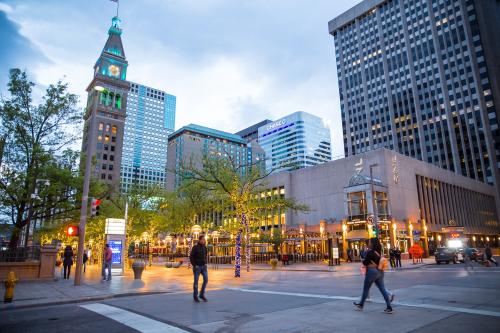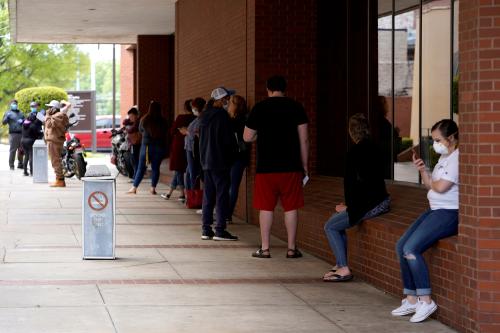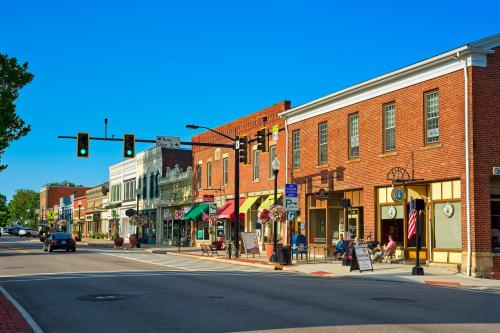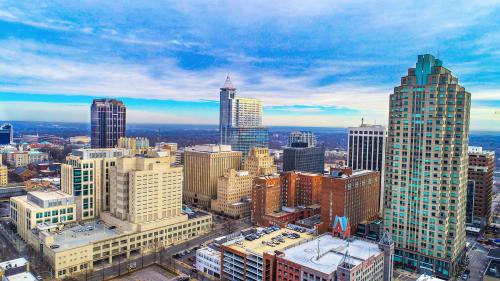Leading up to Election Day, the last glimpse many American voters will have of economic recovery across U.S. metropolitan areas is one of tepid and uneven progress. COVID-19 infections have been rising over the past few weeks, hitting a seven-day record of more than 500,000 cases last week. Alongside this alarming trend, monthly indicators point to rising uncertainty around the pace of economic improvement.
To some extent, experts predicted a fall/winter surge in COVID-19 cases. However, as the reality of a worsening pandemic sets in, so do concerns that actions to fight COVID-19’s spread could derail an already tentative economic recovery. Brookings’s Metro Recovery Index tracks the economic trajectory of large and midsized metropolitan areas around the country. During September, some of the Index’s labor market and economic activity indicators improved, but several others stagnated or worsened.
Jobless claims and unemployment rates dropped in most metro areas
Across 154 metro areas for which data exists, initial applications for unemployment insurance dropped 7% in September from their level in August. Most metro areas (119 of the 154) saw decreases in initial claims over the month, suggesting an improving hiring outlook in most regions.
Similarly, unemployment rates declined in a majority (117 of 191) of metro areas between August and September. Even so, 16 metro areas (including very large ones such as Baltimore, New Orleans, and San Francisco) saw no change. And in 58 metro areas predominantly located in the Sun Belt (e.g., Atlanta, Dallas, Houston, Miami, Phoenix), unemployment rates increased in September. This may reflect more of their residents reentering the labor market to look for work, but finding few opportunities.

Small business recovery grounded to a halt in September, and reversed in the Midwest
Following widespread closures in March and April, the nation’s small businesses started reopening in late spring as states lifted restrictions and the pandemic subsided, at least in certain parts of the country. Now, as the pandemic resurges, many small businesses are closing or cutting hours again.
After a three-month period of slow recovery, the number of small businesses open and number of hours worked at those businesses in the 50 largest metro areas decreased slightly in September from August. The downward trajectory was particularly profound in the Midwest, where new infections have skyrocketed. In no Midwestern metro areas did the share of small businesses open increase in September.
The decline in the number of businesses open spanned across all regions on average, with the largest Midwestern metro areas experiencing the steepest drops. No metro area in the region saw an increase. Such patterns signal the potential for worsening labor market conditions as the pandemic enters a third peak of infections. A similar pattern held for hours worked at small businesses, which declined in 30 of the country’s 50 largest metro areas. Small business hours dropped by almost 10% in Milwaukee, as Wisconsin emerged as a new COVID-19 epicenter.

Weak job growth signals a slowing recovery heading into winter
U.S. metro areas added fewer jobs in September than August. Employers across the 191 metro areas surveyed added 635,000 jobs in September, compared to the 1.1 million jobs they added in August. September marked the smallest increase in jobs since employment began to rebound in May.

Only one of the nearly 200 metro areas tracked in the Index—Ocala, Fla.—had returned to its pre-pandemic jobs baseline in September. Among very large metro areas, Salt Lake City, Oklahoma City, and Indianapolis were close to their January job levels.
Conversely, 26 metro areas still had job deficits of at least 10% in September. These included tourism hubs (Honolulu, Las Vegas, New Orleans, Orlando, Fla.), global cities that the virus initially hit hard (Boston, Detroit, Los Angeles, New York), and—worryingly—older industrial hubs that were already struggling before the crisis (Rochester, N.Y., Scranton, Pa., Syracuse, N.Y., Springfield, Mass., Youngstown, Ohio). While some of these places posted strong job gains in September, the tourism hubs in particular are struggling to bounce back as domestic and international travel remains depressed.
Notwithstanding some variation across the map, September ushered in a new, more uncertain phase of the economic recovery after a summer characterized by relatively steady progress. As COVID-19 cases reached new peaks in October across a wide range of states, the overall economic mood in metropolitan America may be souring—one of many factors certain to be on voters’ minds as Election Day approaches.








Commentary
As COVID-19 cases surge, the country’s economic recovery is losing steam
October 30, 2020